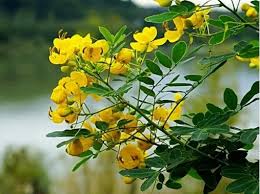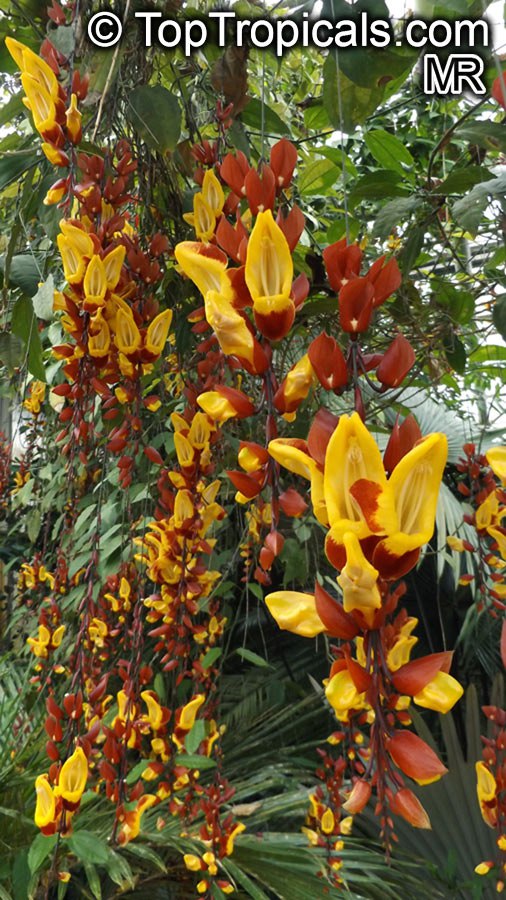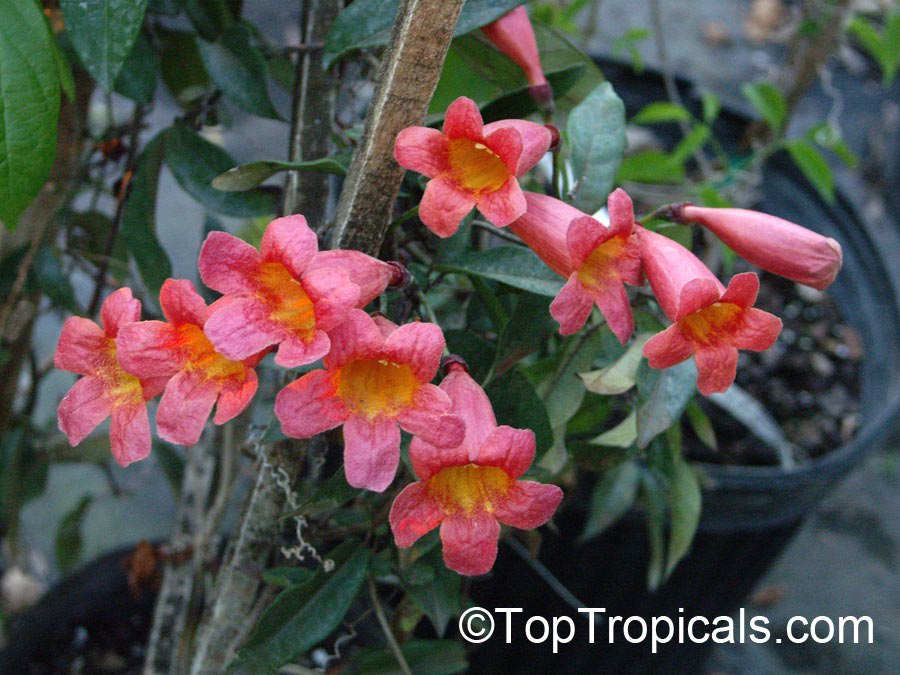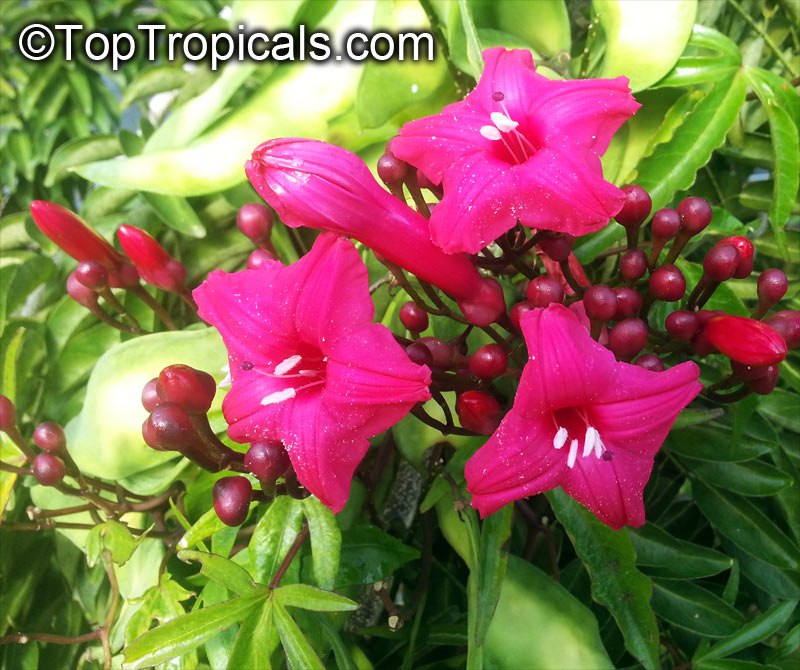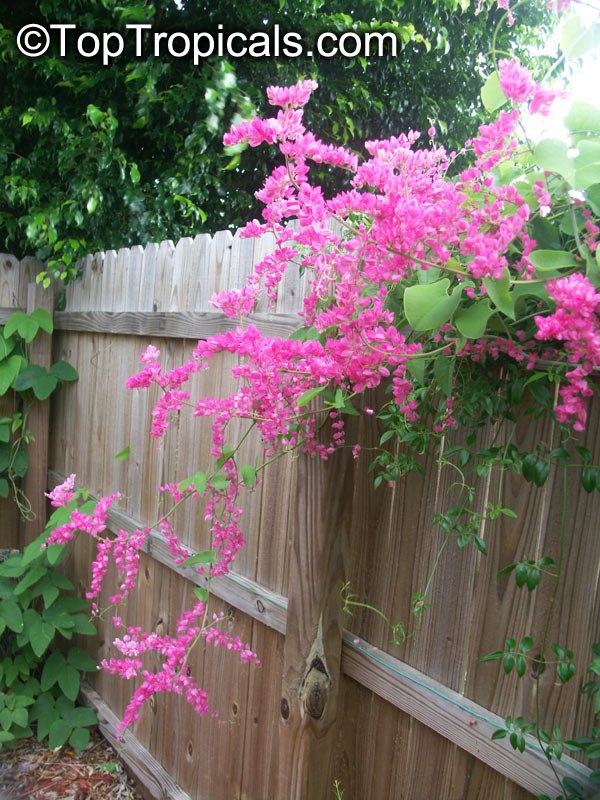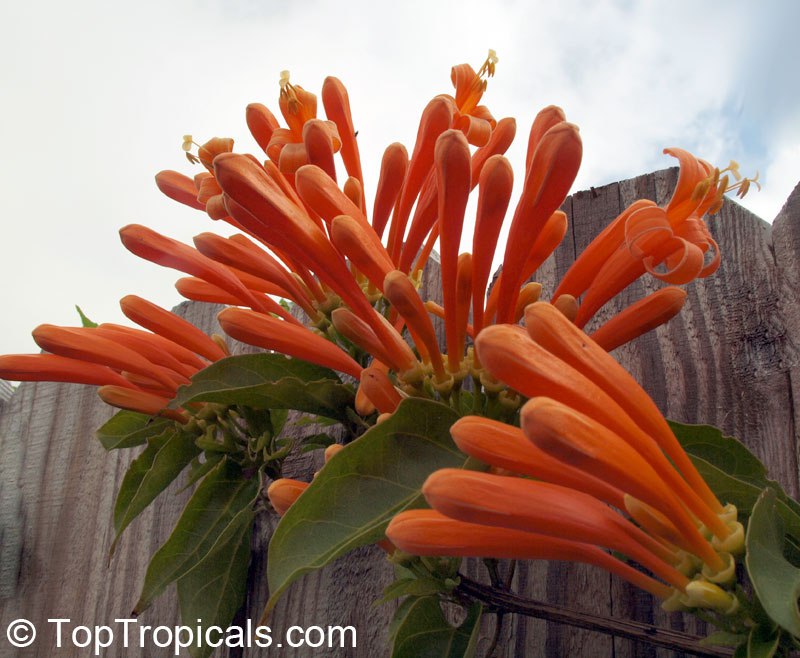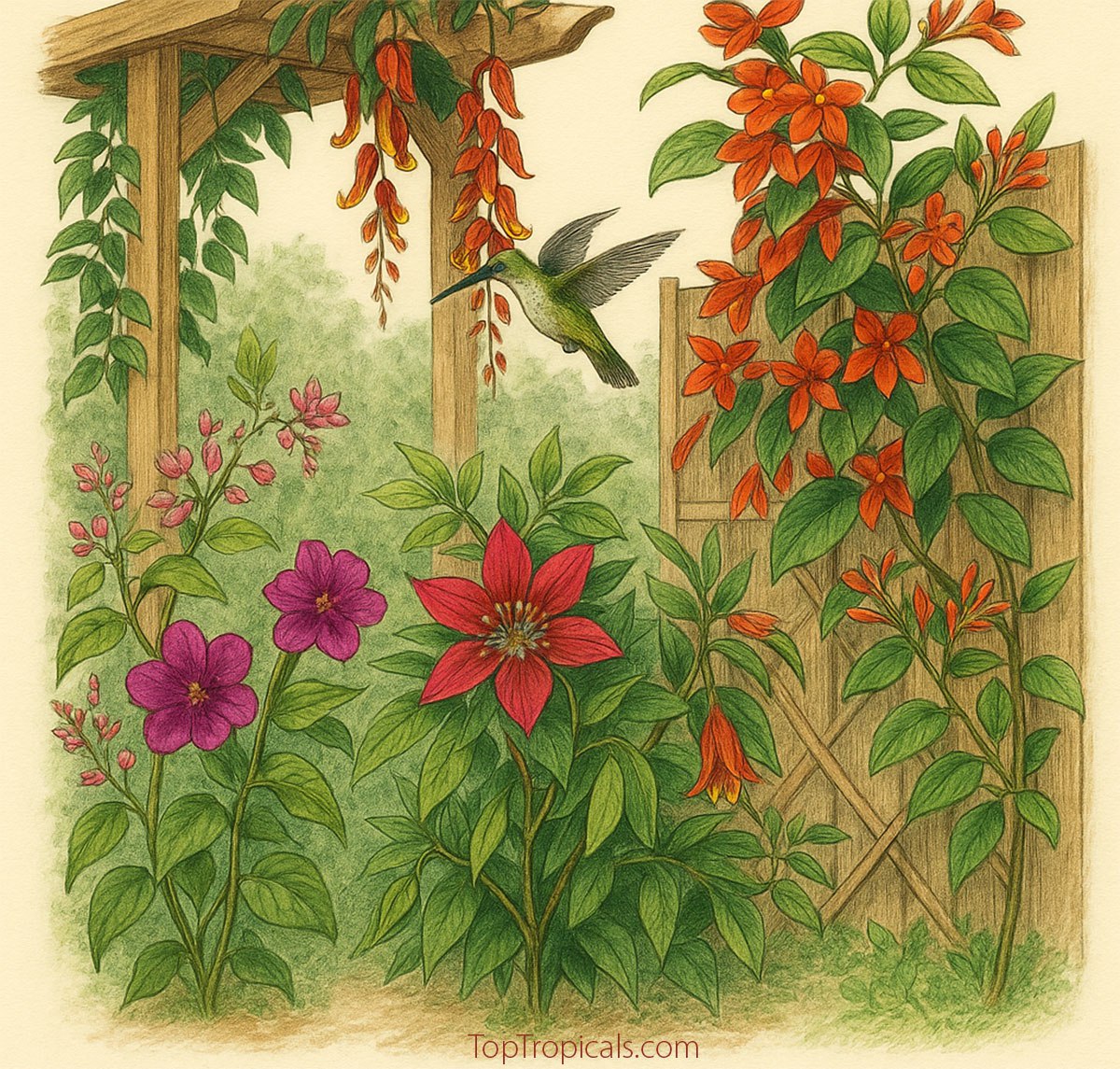Garden Blog - Top Tropicals
Have you ever seen a Half-n-Half Parrots Beak?
Gmelina philippensis variegata - Half-n-Half Parrots Beak
‼️ Just landed: Half-n-Half Parrots Beak - rare variegated form! Limited quantities - first time ever!
- 🐦 We just got our hands on a super rare twist of a beloved classic - Half n Half Parrot's Beak! This is not your average Gmelina philippensis. It's a variegated version you've probably never seen before, and it's ready to steal the show!
- 🐦 Classic Parrot's Beak is already a fan favorite with its whimsical, hanging branches and cartoonish yellow blooms that really do look like parrots mid-laugh. Now imagine all that - with variegation!
- 🐦 Why is it special? Because each leaf is half green, half creamy-white - a stunning two-tone effect . It's got the same iconic yellow parrot-beak flowers, but with a brand-new flair.
- 🐦 Compact growth and ivy-shaped foliage make it ideal for bonsai. The leaves reduce beautifully with training. Develops character as it ages: spiny branches, textured bark, and an artistic form perfect for styling.
- 🐦 Fast grower with a naturally tidy canopy, it produces eye-catching yellow flowers shaped like parrot beaks, hanging in chain-like racemes. This rare form is perfect for collectors, bonsai lovers, or anyone who wants a showpiece plant that sparks conversation.
- 🐦 Note: Gmelina is pronounced "Melina" - the G is silent, but the plant is anything but!
📚Check out the Classic Parrot Beak in earlier post and in the '>Video
🛒 Limited quantity available - grab your Half n Half before they’re gone!
#Butterfly_Plants #Hedges_with_benefits #Nature_Wonders
🔴 Join 👉 TopTropicals
Why Hummingbird Tree?
🍥 Why is Sesbania grandiflora (Hummingbird Tree) so popular? Because it's as useful as it is beautiful. This small, fast-growing tree stands out with its striking, bird-shaped flowers and incredible versatility:
🍥 Ornamental beauty: The large flowers (ivory-white or red) resemble little birds and bloom in abundance, creating a floral canopy from fall through summer.
🍥 Edible flowers and leaves: Used in curries, salads, and even fried in batter. Tender leaves and green fruits are also eaten in Southeast Asian cuisine.
🍥 Fast-growing, flood-tolerant: Great for reforestation, shade, or as a quick ornamental tree for wet or challenging areas.
🍥 Medicinal: Every part of the plant is used: bark for fiber and medicine, flowers for food, wood for light construction, gum for fishing lines, and even as natural pest control.
🍥 It's a food plant, a medicine cabinet, a garden centerpiece, and a support system for other plants - all in one tree. That's why gardeners, farmers, and chefs all love the Hummingbird Tree.
🛒 Get an edible Hummingbird Tree
📚 Learn more about Sesbanias:
Black flowered Sesbania
Hummingbird trss: you can eat the whole tree!
#Food_Forest #Remedies #Butterfly_Plants #Container_Garden #Fun_Facts
🏵 TopTropicals
Why Hummingbird Tree?
Sesbania grandiflora (Hummingbird Tree)
- 🍥 Why is Sesbania grandiflora (Hummingbird Tree) so popular? Because it's as useful as it is beautiful. This small, fast-growing tree stands out with its striking, bird-shaped flowers and incredible versatility:
- 🍥 Ornamental beauty: The large flowers (ivory-white or red) resemble little birds and bloom in abundance, creating a floral canopy from fall through summer.
- 🍥 Edible flowers and leaves: Used in curries, salads, and even fried in batter. Tender leaves and green fruits are also eaten in Southeast Asian cuisine.
- 🍥 Fast-growing, flood-tolerant: Great for reforestation, shade, or as a quick ornamental tree for wet or challenging areas.
- 🍥 Medicinal: Every part of the plant is used: bark for fiber and medicine, flowers for food, wood for light construction, gum for fishing lines, and even as natural pest control.
- 🍥 It's a food plant, a medicine cabinet, a garden centerpiece, and a support system for other plants - all in one tree. That's why gardeners, farmers, and chefs all love the Hummingbird Tree.
🛒 Get an edible Hummingbird Tree
📚 Learn more about Sesbanias:
Black flowered Sesbania
Hummingbird trss: you can eat the whole tree!
#Food_Forest #Remedies #Butterfly_Plants #Container_Garden #Fun_Facts
🏵 TopTropicals
What is the best plant for a butterfly garden
Panama Rose - Rondeletia leucophylla
- If you're looking to add a splash of color and attract fluttering butterflies, the Panama Rose (Rondeletia leucophylla) is a must-have for your butterfly garden.
- This stunning shrub, reaching up to 5 feet, is a true butterfly magnet with its bright pink, star-shaped flowers that bloom in clusters.
- Why every gardener wants Panama rose for their butterfly garden? The sweet nectar from these flowers draws in butterflies, making it the perfect addition for a garden that thrives on natural pollinators.
- Panama Rose has an enchanting fragrance that becomes more noticeable after sunset.
- Native to Mexico, it’s ideal for USDA Zones 9-11, though with the right care, it can thrive in colder regions too.
- This easy-care shrub thrives in full sun with regular watering and can tolerate occasional flooding. It maintains a natural, bushy shape and blooms cheerful, cup-shaped flowers from November to early summer, with sporadic blooms throughout the year.
🛒 Plant Panama Rose Butterfly Magnet
#Hedges_with_benefits #Butterfly_Plants
🔴 Join 👉 TopTropicals
What to plant in a shady spot? Unusual variegated flowers of Lavender Ice!
Thunbergia erecta Lavender Ice - Lavender Lace
- 💜 Thunbergia erecta Lavender Ice, or Lavender Lace, is a unique, rare variety of King's Mantle with stunning lavender-off-white variegated flowers.
- 💜 Unlike many variegated plants, this one is vigorous and easy to grow. It can be used as a showy garden specimen or a low-growing hedge, and it responds well to pruning, which encourages more blooms.
- 💜 This plant thrives in filtered light and will grow larger, darker leaves in shade. It reaches a height of 5-7 feet and has a dense habit, making it perfect for creating a hedge.
- 💜 Lavender Ice attracts butterflies and hummingbirds with its profusion of flowers
- 💜 For healthy growth, keep the soil consistently moist, but not soggy, and mulch around the base to retain moisture. If growing in a pot, frequent watering is key.
- 💜 It's hardy enough to withstand temperatures as low as 30F for short periods. Ideal for USDA Zones 9-11, this plant can also be grown in pots in colder climates.
🛒Bring home rare Lavender Ice!
#Container_Garden #Shade_Garden #Hedges_with_benefits #Butterfly_Plants
🔴 Join 👉 TopTropicals


